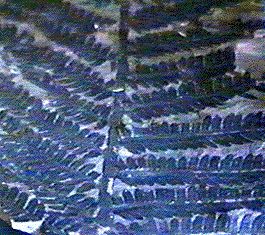Fossils and the history of life - How are fossils formed?

Which species are most likely to be fossilized?
For any organism to leave a fossil requires a series of events, each of which is unlikely. We can consider these events for the case of hard parts; analogous points apply for trace and chemical fossils.
When the organism dies, its soft parts will either be eaten by scavengers or be decayed by microbial action. For this reason, organisms that consist mainly of soft parts (such as worms and plants) are much less likely to leave fossils than are organisms that have hard parts. The image opposite is an exception: a fossilized fern from the Cretaceous period.
The fossil record is therefore biased in favor of species that possess skeletons. Only an organism's hard parts stand much chance of fossilization; but in most cases these too will be destroyed. Hard parts may be crushed by rocks, stones, or wave action, or broken up by scavengers.
The paleontologist Simon Conway Morris describes the fossilization process.
| Next |



